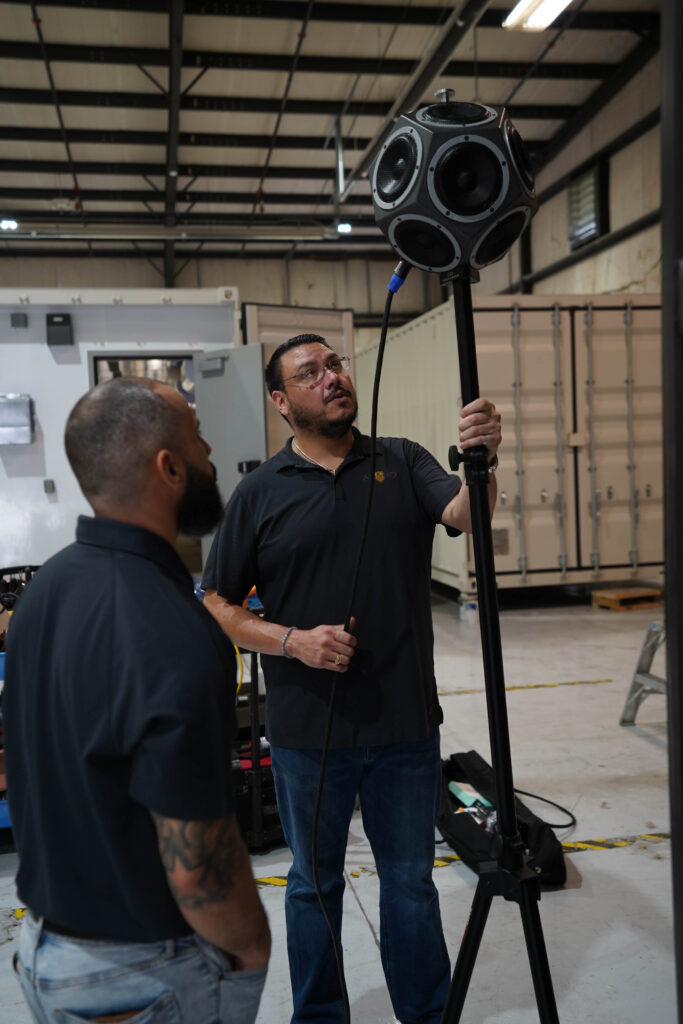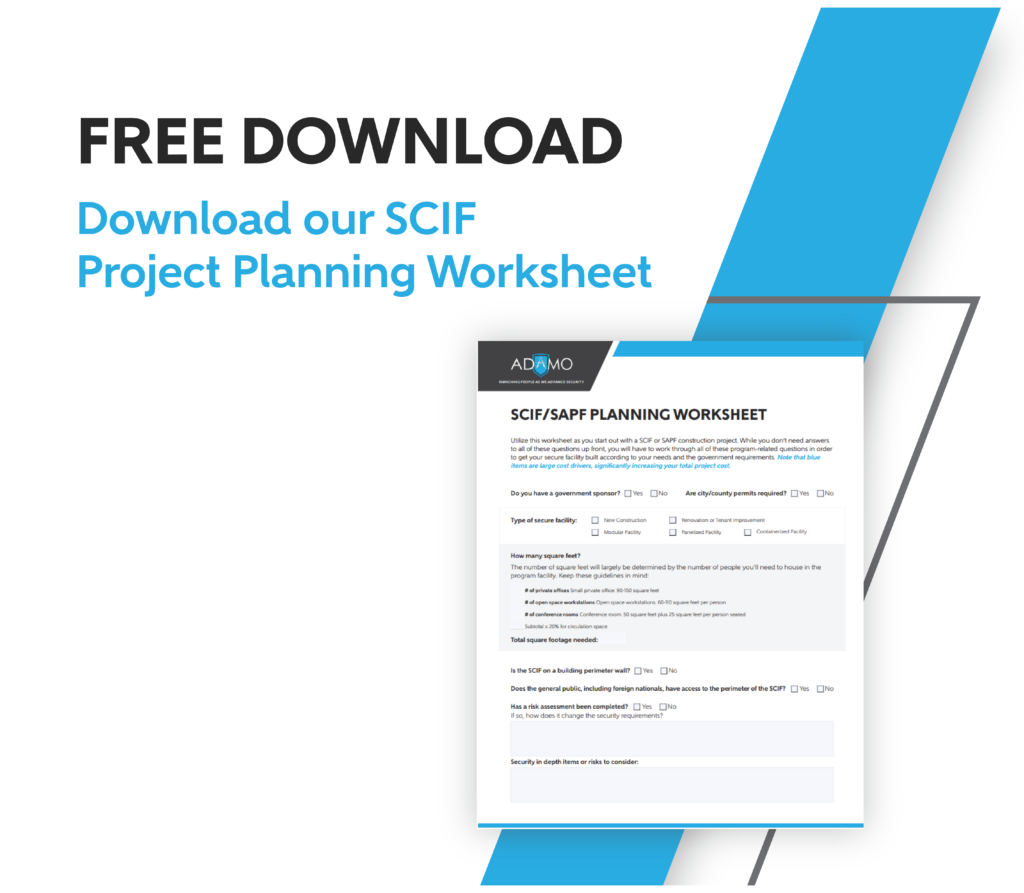An overview of E366 testing and more for SCIFs and SAPFs
When you’re discussing classified information, you can’t risk it being overheard. Because of this, acoustic protection is a crucial part of security for a SCIF or SAPF. Depending on where your facility is built, your Certified TEMPEST Technical Authority (CTTA) or Accrediting Official (AO) will determine what risk you face and what acoustic standard you need to meet in response to that risk.

The 12-sided speaker used in acoustic testing
How is Acoustic Protection Measured?
There are a few different relevant measurements for the effectiveness of acoustic protection. The one primarily referenced in the ICD 705 Technical Specifications, or Tech Spec, is Sound Transmission Class (STC). STC is a score that indicates how much sound is stopped by a partition like a wall or door. The ICD 705 also mentions a Noise Isolation Class (NIC) score, which is a measurement of the total sound insulation between two rooms rather than just measuring the partition. STC is a measurement of the assembly in a controlled laboratory setting whereas NIC is a score of the performance in the field. You may also want to focus on the partition, room or facility’s Speech Privacy Class (SPC). This is a score for how well the facility stops the sound in the frequency range of typical human speech.
How is Acoustic Testing Conducted?
Acoustic testing requires a few pieces of specialty equipment: a 12-sided speaker, an audio and acoustic analyzer, and an audio generator. The speaker plays white noise that simultaneously plays all the frequencies that need to be tested, allowing you to measure how well each frequency is blocked by your acoustic protection. This white noise will be played at around 90 decibels, about the noise level of a concert or a leaf blower. Normal conversation is around 60 decibels.
The most common acoustic test is the E366 test, or interior partition test, which measures the effectiveness of the acoustic protection on walls inside your facility. For this test, any windows or doors along the wall are treated as part of the partition. To perform this, you test one wall at a time from both sides. There are multiple measurements that need to be taken. First is the time reverberation measurement. For this test, turn on the speaker, turn it off, and measure how long it takes for the sound in the room to return to the sound level it was before the speaker was on. Repeat this process at least three times and average those measurements.
After this, you need to measure the sound in the source room, or the room with the speaker. You will turn the speaker on and walk along the partition while recording while maintaining a specified distance from the partition. Each recording must be at least 30 seconds. This shows how sound travels in the source room.
In the receiving room, there are two types of recordings that need to be taken. The first is the background measurement. For this measurement, record the sound in the room when the speaker is not on. This will show how much noise is naturally in the room from highway noise, air conditioning, or any other factors so that those are accounted for when measuring how much sound is getting through the partition.
The next is the receiving room measurement with the speaker. Turn the speaker on in the source room and then walk along the partition in the receiving room at a specified distance from the partition. The audio analyzer will record how much sound at different frequencies is making it through the partition, so you’ll be able to get your data for all the frequencies at once rather than having to test each frequency individually.
After all this, you will move the speaker to what was the receiving room and repeat the whole process in order to make sure that sound doesn’t escape on either side of the partition and if it does, how loudly it passes through the partition.
These tests will take a couple hours per room typically, though that can vary depending on the size and geometry of the room. Once you have all this data collected, you will be able to calculate the STC, NIC or SPC rating for the facility and determine whether it matches the CTTA or AO’s requirements.
If you need to specifically test doors or windows, those have their own types of testing, but those tests are significantly less common than treating them as part of the partition. For exterior partitions, the process is the same, except that you will only have to test one side of the partition. If these rooms are on an upper floor, testing them will require a lift for any parts of the partition that isn’t accessible by a balcony.
These tests require specialized knowledge and equipment to perform and find the needed sound rating. When you need assurance they will be performed using American Society for Testing and Materials (ASTM) standards, the experts at Adamo can help. We offer both acoustic and Radio Frequency (RF) testing services. We use top-of-the-line NTi equipment to accurately measure your facility’s performance, offer a detailed report of our findings, and offer custom guidance on how to improve performance if you don’t meet your protection or shielding requirements.




